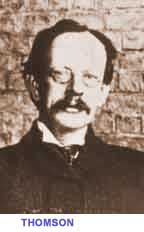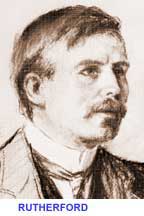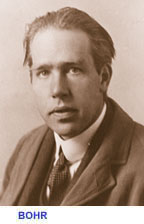The Discovery of Fission
Prize winner and famous for creating the world's first nuclear chain reaction. Arthur Holly Compton of the United States-Nobel Prize winner famous for his discoveries about electrons and cosmic rays. Niels Bohr of Denmark-Nobel Prize winner famous for his insights into the structure of atoms. Otto Hahn of Germany-Nobel Prize winner famous for his discovery of nuclear fission.The list continues: Einstein of Germany, Curie and Joliot of France, Meitner and Frisch of Austria, Wheeler and Alvarez of the United States. Most of them winners of the Nobel Prize; all of them superb scientists. An international community, joined in an effort to answer an ancient question—how does matter behave? A community that in 1939 came to focus on one narrow question—what happens to a uranium atom when a neutron hits it?
In the audio you can listen to these illustrious men and women describe the historic events which brought them to understand nuclear fission. You will not be listening to actors but to the people who actually made history.
This is a first-person account. It is not a physics lesson; you should not expect to learn all about the physics of nuclear fission. What you can expect is a better understanding of how science is done. This exhibit gives a glimpse into the scientific process, the lives of some renowned individuals involved in that process, and their role in solving a particular problem. As you listen and read, you will hear them describe themselves—their frustrations, their successes, their prejudices, their world view. They tell of how they related to science as human beings.
Can atoms be split apart? Does each atom have inner workings? Parts which can be separated? Parts which can perhaps be put to some use? These questions had already come to mind in 1898, when J. J. Thomson isolated the electron. That was the first solid proof that atoms are indeed built of much tinier pieces. Thomson speaks of the electron in this recorded passage...
 THOMSON: Could anything at first sight seem more impractical than a body which
is so small that its mass is an insignificant fraction of the mass of
an atom of hydrogen, which itself is so small that a crowd of these atoms
equal in number to the population of the whole world would be too small
to have been detected by any means then known to science.
THOMSON: Could anything at first sight seem more impractical than a body which
is so small that its mass is an insignificant fraction of the mass of
an atom of hydrogen, which itself is so small that a crowd of these atoms
equal in number to the population of the whole world would be too small
to have been detected by any means then known to science.
Ideas about the atom were refined by one of Thomson's students, Ernest Rutherford. He showed that the mass in an atom is not smeared out uniformly throughout the atom, but is concentrated in a tiny, inner kernel: the nucleus. Rutherford wanted to understand the nucleus, not for any practical purpose, but because he was attracted to the beauty of its simplicity. Fundamental things should be simple not complex. Here is how he explains himself in 1931...
 RUTHERFORD: The bother is that a nucleus, as you know, is a very small thing, and
we know very little about it. Now, I had the opinion for a long time,
that's a personal conviction, that if we knew more about the nucleus,
we'd find it was a much simpler thing than we suppose, that these fundamental
things I think have got to be fairly simple. But it's the non-fundamental
things that are very complex usually. I am always a believer in simplicity
being a simple person myself.
RUTHERFORD: The bother is that a nucleus, as you know, is a very small thing, and
we know very little about it. Now, I had the opinion for a long time,
that's a personal conviction, that if we knew more about the nucleus,
we'd find it was a much simpler thing than we suppose, that these fundamental
things I think have got to be fairly simple. But it's the non-fundamental
things that are very complex usually. I am always a believer in simplicity
being a simple person myself.
A young man working with Rutherford in 1911 was Niels Bohr. They created a halfway successful model of the atom called the Rutheford-Bohr model. They imagined a nucleus at the center with electrons orbiting around it. Twenty-five years later, Bohr described his collaboration with Rutherford...
 BOHR: If, twenty-five years ago, I had the good fortune to give a modest contribution
to this development, it was, above all, thanks to the hospitality I then,
as a young man, enjoyed in the famous laboratories of England. In particular,
I think with grateful emotion of the unique friendliness and straightforwardness
with which Rutherford, in the midst of his unceasing creative activity,
was always prepared to listen to any student behind whose youthful inexperience
he perceived a serious interest.
BOHR: If, twenty-five years ago, I had the good fortune to give a modest contribution
to this development, it was, above all, thanks to the hospitality I then,
as a young man, enjoyed in the famous laboratories of England. In particular,
I think with grateful emotion of the unique friendliness and straightforwardness
with which Rutherford, in the midst of his unceasing creative activity,
was always prepared to listen to any student behind whose youthful inexperience
he perceived a serious interest.
To Bohr, studying the atom was a friendly pursuit of truth. The public was not so sure. Rutherford and other scientists had already happened to notice that energy is intensely concentrated within the nucleus. Newpapers began to talk about the chances of unlocking that energy. Reporters said atoms might run the world's industry someday, after our supply of coal and oil ran out. On the other hand, H. G. Wells wrote a novel featuring atomic bombs. The St. Louis Post-Dispatch in 1903 describes atomic energy...
NEWS ARTICLE: "The most wonderful and mysterious force in the universe—the atom's power—will be inconceivable. It could revolutionize the illumination system of the world. It could make war impossible. It is even possible that an instrument might be invented which at the touch of a key would blow up the whole earth and bring about the end of the world."
